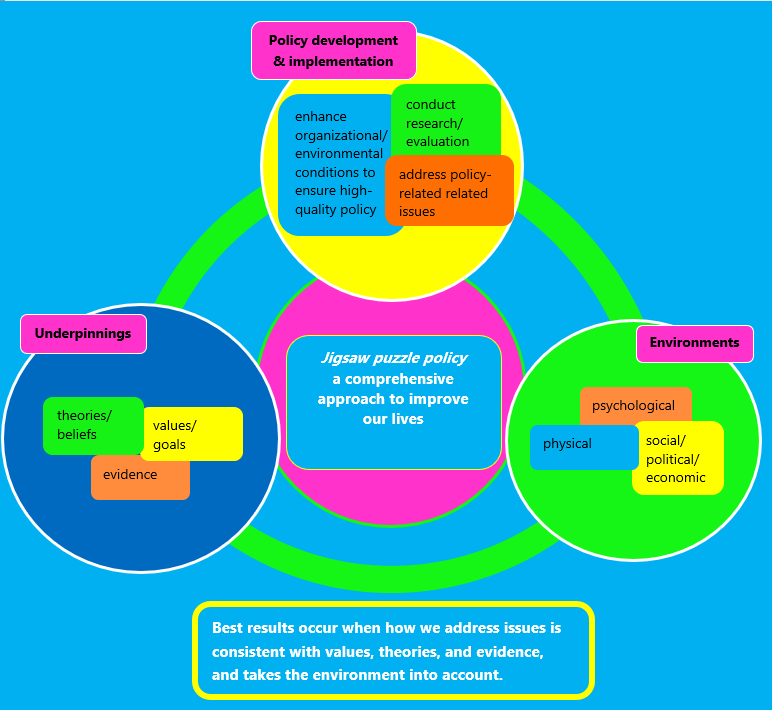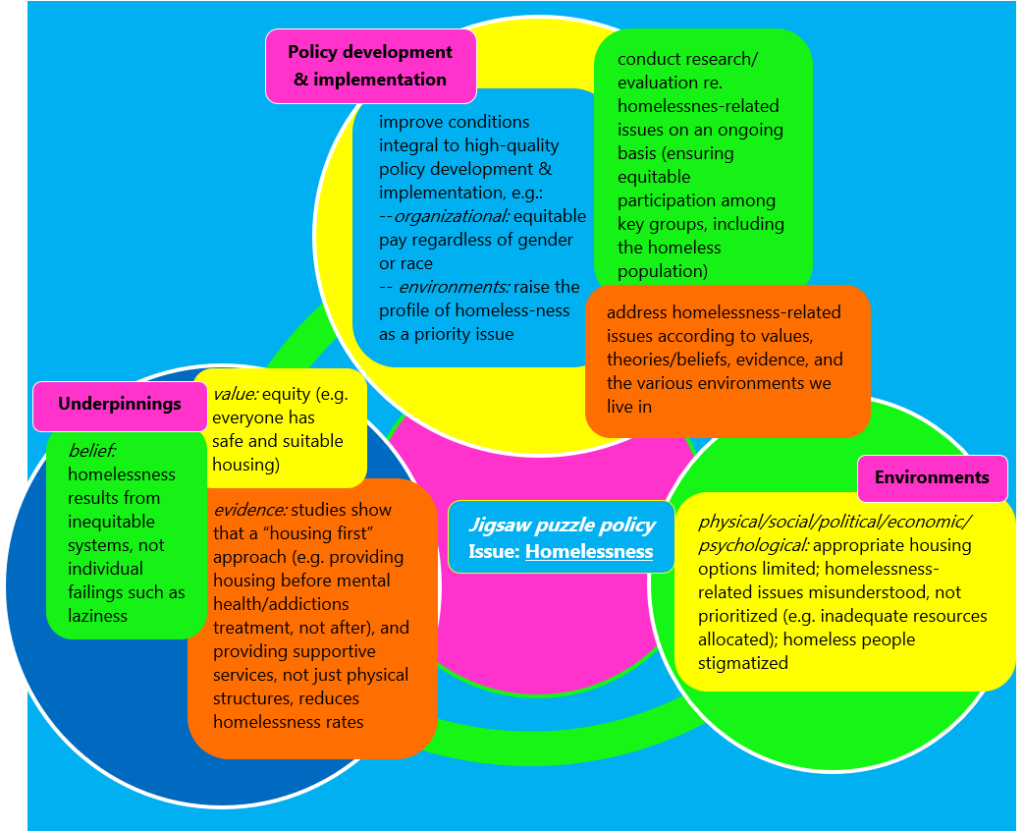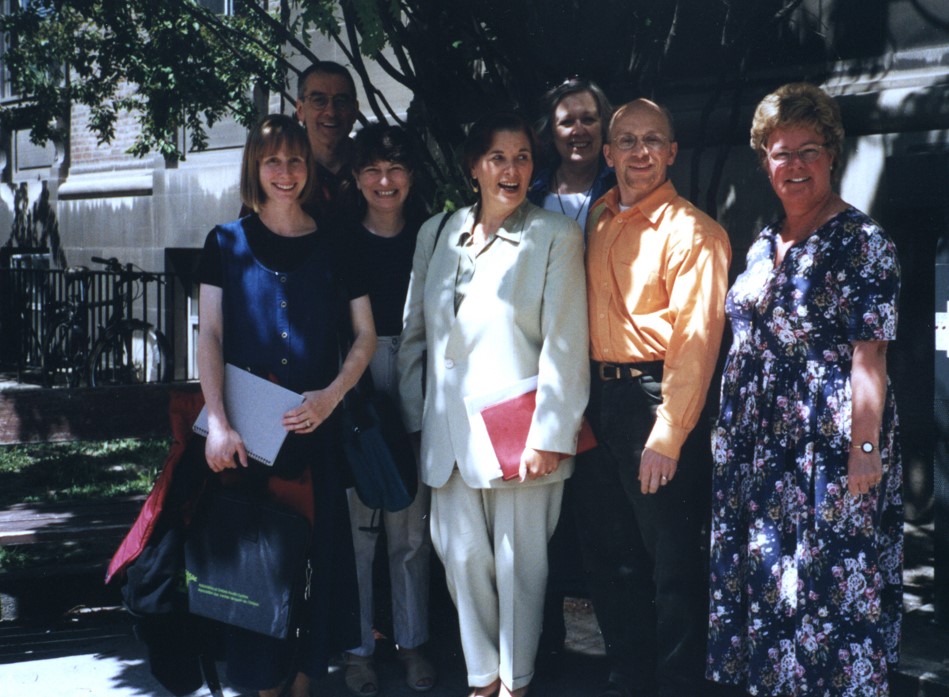Jigsaw Puzzle Policy
Jigsaw Puzzle Policy

Introducing – Jigsaw Puzzle Policy for You and Me
Developing high quality policy positions, and then doing our best to ensure that these policy positions are implemented, is critically important if we want a world where everyone lives as healthy, joyful, and meaningful a life as possible.
It’s the job of many people to develop policy, and an important job it is. However, it’s equally important for the non-experts, you and me, to understand policy and develop our own policy positions.
The two main reasons we need to be knowledgeable about policy? First, to make informed decisions about which policy platforms to support as presented by politicians and others. Second, to use our voices to influence the shape of governmental and non-governmental policy.
Read on to find out more about Jigsaw Puzzle Policy!
Description
We’re working on a jigsaw puzzle, maybe a scene with kids and adults splashing in a lake or eating a picnic lunch on the sandy beach. Frustratingly, some pieces have disappeared. (Eaten by the dog? Hidden behind the couch by the resident toddler? Misplaced in another puzzle box?) In that missing piece of sky, was there more blue sky, a thunder cloud and lightning flash, a hot air balloon, a spiralling out of control airplane?
The nature of these missing pieces would give us a different interpretation of the scene, suggesting different calls to action. More blue sky – an idyllic day at the beach, keep on enjoying. A thunder cloud with lightning flash – time to pack up and head for home. A hot air balloon – a fun idea for another holiday activity, maybe later this afternoon. A crashing airplane – heed the threat; scatter out of the plane’s trajectory and contact emergency services.
Policy is like a jigsaw puzzle. Missing pieces, whether in the policy development or implementation phase, guarantee a policy response with holes in it, which means it will not be as effective as it could be.
What are the necessary policy pieces? My list includes three key areas:
— underpinnings: values/goals, theories/beliefs, evidence
— our environments: physical, social/political/economic, psychological
— activities and processes to develop and implement high quality policy: enhance organizational and environmental conditions to support quality policy, conduct research and evaluation, and address the selected policy-related issue
The key difference between jigsaw puzzle policy and an actual jigsaw puzzle is that the puzzle is static; the way the pieces fit together are preordained and they will not change their nature (unless chewed by the dog or faded with time). Jigsaw puzzle policy, on the other hand, is dynamic, because we are aware of how all the various pieces influence each other and how a change in one causes change in others.
Example
The diagram below illustrates a simplified version of the pieces included in homelessness-related policy.

Watch this page for more as I figure out the best way to present my thoughts about the IDM, a comprehensive best practices approach for health promotion and public health, which I took a lead role in developing, and am now riffing on to develop Jigsaw Policy and Practice for the general public and an extended range of policy issues.
History
A bit about the Interactive Domain Model, the precursor of Jigsaw Policy and Practice: The IDM was based on an extensive literature review; results from two pilot testing periods with community health centres, public health units, and hospitals; and feedback from people using the IDM in a variety of situations and locations. The essence of the IDM involved identifying and defining our underpinnings (values, beliefs, evidence) and understanding of our environments (socio-political, economic, psychological, physical) – and then ensuring that our practice (what we do and how we do it) aligns with the other two domains. Critically reflecting on the nature of – and interactivity among – our underpinnings, understanding of our environments, and practice, makes it more likely that we will achieve results compatible with our goals.
A few of the people I worked with on developing the best practices approach are in the photo below, which was taken after a Best Practices Work Group meeting, in front of the Centre for Health Promotion, University of Toronto.
